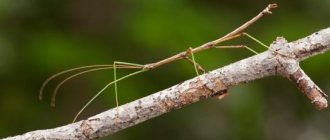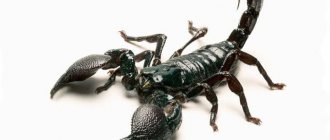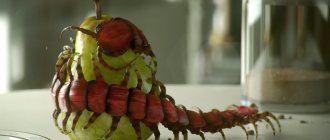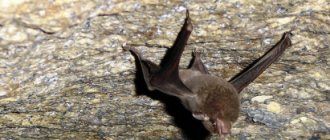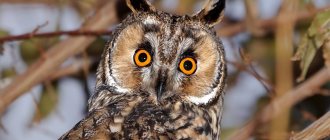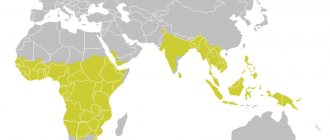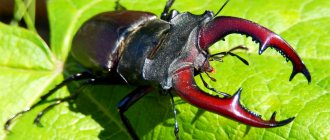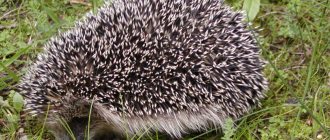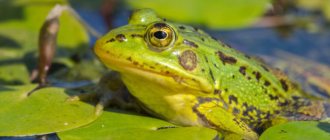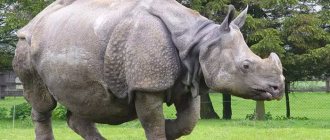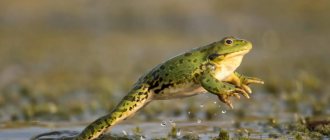- Wild animals
- >>
- Insects
Not everyone is lucky enough to see a rhinoceros beetle in person. However, if it comes into view, it will not leave the memory for a long time. This is a fairly large insect, attracting with its extraordinary appearance. The rhinoceros beetle got its unusual name due to a small growth on its head, which looks very much like a rhinoceros horn. In females it is little expressed, but males have an impressive horn.
Origin of the species and description
Photo: Rhinoceros beetle insect
Rhinoceroses belong to the family of lamellar insects. There is a huge variety of them in nature: Australian, Japanese, elephant beetle, North American, giant, Asian, and many other species. Science knows more than one thousand three hundred varieties of this insect. Their representatives inhabit almost the entire globe, with the exception of particularly cold regions.
Video: Rhinoceros beetle
The rhinoceros beetle has two distinctive features. The first is a pronounced horn on the head of males. It is extended high up, quite strong, and has power. The second important feature is the durable chitinous shell. It reliably protects the beetle from enemies. Outwardly it resembles soldier's armor. In addition to its unusual appearance and large dimensions, the rhinoceros is considered one of the most powerful creatures on the planet. This is, of course, taking into account its actual size.
Interesting fact: The aerodynamic structure of the body of this insect can confidently be called not intended for flight. However, the rhinoceros beetle does not care about the laws of physics. He not only flies, but is capable of covering record distances through the air. Such bugs can easily cover a distance of more than thirty kilometers. This was confirmed by scientists and documented as a result of experiments.
Another phenomenal quality inherent in members of the family is the ability to generate a small electrical charge. It is formed on the body of the beetle thanks to special brushes. In the event of a collision, the enemy may feel a slight electric shock.
Varieties
You should not think that this cute and, in general, harmless creature, which we occasionally encounter in nature, and some hobbyists keep in their insectariums, is the only representative of its species. For example, the genus Oryctes alone includes over 40 species. The variety of rhinoceros beetles is impressive.
Of the exotic species, the most interesting are:
- Hercules beetle (Dynastes herkules)
- unicorn beetle (Dynastes titus)
- Japanese rhinoceros beetle (Trypoxylus dichotomus)
- Asian or palm rhinoceros beetle (Oryctes rhinoceros)
- Australian common rhinoceros beetle (Xylotrupes ulysses)
- neotropical rhinoceros beetle or elephant beetle (Megasoma elephas).
In total, more than 1,500 species of this insect have been described, and we hope that this list will be expanded in the future.
Appearance and features
Photo: Rhinoceros beetle
The rhinoceros beetle has the following external features:
- Large dimensions. The insect can reach a length of forty-seven millimeters. Male beetles are slightly larger than females.
- Characteristic horn. This growth is pronounced in males. In females it is small, resembling an ordinary tubercle. There is also a transverse prominence on the pronotum of beetles.
- Small head. Almost the entire head of males is occupied by a horn. Beetles have wide eye lobes and a large upper jaw. The back of the head is mostly smooth. The side of the insects' head is covered with deep wrinkles.
- Weakly transverse pronotum. In the male it has large dimensions. The posterior part of the pronotum is convex and has tubercles. In front it is slightly smoothed out. A transverse rib is located on the pronotum. It usually has three tubercles.
- Convex elytra. They have remarkably developed shoulder tubercles. The propygidium is covered with wrinkles and hairs.
- Strong, short legs. They are widely spaced. The front ones are designed for digging, the rest help the insect move around the terrain without problems.
- Unusual color. The rhinoceros beetle is a very beautiful insect. His body shimmers pleasantly in the sun. It is shiny and has a red-brown color. Only the lower side of the body is slightly yellow and is much lighter than the upper.
- Thick, C-shaped larva. It has a yellow-white color and can reach eleven centimeters in length.
Interesting fact: Protruding horns are the main feature of rhinoceros beetles. But scientists still cannot explain their purpose. It would seem that this is an excellent means of defense or attack, but insects escape from danger in a completely different way. When meeting an enemy, they instantly pretend to be dead. The bugs fold their legs, tuck their antennae, and quickly fall to the ground. There they merge with the soil, branches, leaves.
Body structure of stag beetles
Most species of staghorns are large in size: the length of males can exceed 12 cm, a significant part of which is due to powerful jaws, shaped like horns. However, there are also species with small jaws, typical of other families of Coleoptera.
Hornbills have a strong build: an elongated body combined with a large head. In some species, the head and pronotum (pronotum) may exceed the width of the abdomen. The impressive size of these sections is also explained by the fact that powerful muscles are located inside them, driving the huge jaws.
Head
The head of these beetles is wide and powerful. It contains small eyes, antennae and mouthparts. The back of the head is firmly articulated with the chest shield, so its mobility is very limited. Such a strong joint is necessary for the insect during fights with an opponent.
Eyes
Relatively small compound eyes are hidden behind antennae and jaws on either side of the head. Formed by a large number of ommatidia.
Where does the rhinoceros beetle live?
Photo: Insect rhinoceros beetle
Rhinoceros beetles, their various species, are very widespread. They can be found in Europe. The exception is the northern regions with a cold climate. A large population of these insects lives in the Caucasus, southern Siberia, North Africa, Central Asia, Turkey, Asia Minor, and Syria. A small number of beetles can be found in Crimea and in some regions of Ukraine.
The rhinoceros beetle requires deciduous forests to live, reproduce and feed. This is their natural habitat. Forests of any type are welcome: watershed forests, river floodplain forests, mountain forests, above-meadow terraces, and gully forests. It is in this area that most of the rhinoceros family lives. However, thanks to human intervention, these insects were able to penetrate into other zones: steppe, semi-desert. They are firmly established in artificial plantings and can easily exist in treeless areas.
In Kazakhstan and Central Asia, the animal can be found in the steppe and semi-desert. It has adapted to live and reproduce in human settlements. The insect actively develops in rotted manure, in garbage heaps, various greenhouses and in livestock yards. In a similar way, the rhinoceros beetle is located in northern Europe and the European part of Russia. There it can be found in greenhouses, greenhouses, and various wastes.
Species diversity
Due to the diversity of beetles and their difficult-to-reach habitats, there is no point in listing all these species. It is worth listing those whom people may encounter on tourist trips, while being kept in an insectarium, or simply while walking in the forest. The most common is the Eurasian species of the hollow rhinoceros.
Interesting!
Of the 65 species of the subfamily Dynastinae in the Palearctic region, only five have habitats that coincide with other zoogeographic territories. The remaining 60 are endemic to the Palearctic.
Rhinoceros beetle
What does the rhinoceros beetle eat?
Photo: Large rhinoceros beetle
The diet of the rhinoceros beetle is highly controversial among entomologists. Until now, scientists around the world cannot agree on a common opinion. There are two versions about the rhinoceros diet:
- Its diet is identical to that of the stag beetle. One group of entomologists insists that rhinoceroses consume the sap of various plants: birch bark, oak, birch, and willow. This theory has some compelling evidence. The cutting teeth of the insect are poorly developed, the lower jaws are covered with special bristles. The bristles form an organ that allows the animal to eat plant juice;
- The rhinoceros beetle does not eat at all. This is the second hypothesis. It says that the insect does not consume any food as an adult. It consumes nutrients that were accumulated at the larval stage. This statement also has plausible evidence - the entire digestive system of the insect is atrophied.
Interesting fact: Despite poor or even non-existent nutrition, the rhinoceros beetle is a real strongman. He can lift 800 times his own weight. This phenomenal ability made him famous and popular throughout the world. The strongman beetle often appears on the cover of various scientific and other printed publications.
Habitats of staghorns
Representatives of the family Lucanidae are most numerous in forest areas of the tropics; they are also found in the subtropics and in temperate regions. Only two dozen species from the large family of stag beetles live in Russia.
For a colony of beetles to appear, there must be enough stumps and fallen trunks in the forest. This is explained by the fact that the larval stage of stag beetles occurs almost entirely in old trunks and stumps. It is not entirely known which specific tree species are preferred by stags. The larvae are often found near old stumps of oaks, cork oaks, as well as palms and other tropical trees. One of the factors that really matters is the age of the trunks or stumps. Horn beetles prefer wood at the stage of deep decomposition, although each species of beetles from the family Lucanidae has its own preferences. For example, the stag beetle (Lucanus cervus) develops primarily in trunks with a diameter of more than 20 cm or stumps of trees that died at least five years ago.
Features of character and lifestyle
Photo: Insect rhinoceros beetle
Despite the spread and popularity of the strong beetle, its character and lifestyle have not yet been studied in detail by scientists. Only a few basic facts are known for sure. Thus, the natural habitat for these insects is deciduous forest and forest-steppe. However, as noted above, over time, many representatives of the family have mastered another habitat - semi-deserts, steppe zones with artificial plantings.
Rhinoceros beetles begin to show their activity in the second half of March. They are adapted to temperate climates. The flight period is about five months. During the daytime, these insects usually spend time in a shelter. Its role can be large cracks in trees, holes in roots, underground burrows. Animals rest there. Beetles leave their homes only at dusk.
The nature of the rhinoceros beetle is peaceful. This insect never attacks. It does not bite and cannot harm humans or other animals. In case of danger, rhinoceroses prefer to hide or pretend to be dead. The beetles try to burrow into the ground as quickly as possible. If this is impossible, then they very convincingly depict their own demise: they quickly fall, tuck their paws and antennae.
Lifestyle and habitat
Such beetles choose for their settlement deciduous forests located along river banks and above meadows, as well as steppe artificial forest plantations. Often these creatures climb into tree hollows. They often find shelter in tree bark and other similar places, sometimes hiding underground.
Such creatures are also found in semi-deserts where, as in the northern regions, they tend to settle near human habitation.
The beetles spend all daytime in shelters, and carry out their life activities at night. These creatures are able to fly, and they do it quite well. Although this, according to experts, contradicts physical laws. There are known cases when such beetles flew across the English Channel, covering a distance of up to fifty kilometers without respite.
The rhinoceros beetle flies well over long distances
The flight of hollow rhinoceroses can be observed during the five warm months of the year; in some regions this period lasts a little less. On hot days, beetles usually rake up wood dust and soil with their horns, finding refuge in the cool depths of numerous hidden corners of the forest.
A threat to such creatures is represented by insectivorous animals, as well as large birds, which include magpies, crows and others. Also, small parasites are often bred on beetles, for example, tiny, oval-shaped gamasid mites.
And Scolia gigantea, a parasitic creature from the category of large wasps, can lay its eggs among the larvae of the described insects. Her cubs eat paralyzed beetle larvae immobilized by their mother, and the latter have no chance of survival.
Tree bark and small tree hollows are suitable habitats for beetles.
The species of these creatures are widely distributed throughout the planet and are of considerable interest to humans. However, despite all this, little has been studied. Myths of many nations often endowed such fantastic creatures with an aura of mystery; in legends and fairy tales they were attributed extraordinary power and strength.
There are also many people who want to have a pet rhinoceros beetle . Indeed, this is the original representative of the insect kingdom. Therefore, the desire to be closer to him and observe his behavior is quite understandable.
However, adult beetles do not live long, and the main desire at the stage of their mature life is mating, and for the female half, laying eggs. Next, these creatures recover, according to nature’s instructions, to another world.
Therefore, keeping a rhinoceros beetle is not a fun and fruitful process for everyone, and can only please big fans of zoology.
Social structure and reproduction
Photo: Rhinoceros beetle from the Red Book
Rhinoceros beetles breed during the warm season. Having found a suitable mate for himself, the male fertilizes the female. After some time, the female begins to search for a suitable place for oviposition.
The most suitable for this are:
- old manure;
- rotten stumps;
- garbage heaps;
- trunks of various trees.
The eggs are in the development stage for about one month. Then they turn into a larva. The larva matures by summer. She begins to actively feed, is quite large and voracious. The larvae feed on various plant foods and the remains of decaying trees. The larvae often harm plants by gnawing through their root system. The larval stage lasts up to eight years - this is the longest period of a rhino's life. Its duration depends entirely on the quality of food and the region where the animal lives.
Interesting fact: Female rhinoceros beetles never lay eggs in the trunks of coniferous or citrus trees.
This is followed by a period of pupation. The pupa becomes more and more similar to an adult rhinoceros beetle. At first it is light yellow, then acquires a brown tint. The rhinoceros beetle lives for the sole purpose of leaving behind new offspring. Therefore, the lifespan of an adult is short - only a few weeks. Very rarely it reaches one month.
Natural enemies of rhinoceros beetles
Photo: Rhinoceros beetle insect
Many large birds feed on rhinoceros beetles. Crows, magpies, and woodpeckers are not averse to eating them. Rhinoceroses often fall prey to mammals and reptiles. They also suffer from large amphibians. The natural enemies of this insect are external parasites. They lead to the slow death of the adult. One adult beetle can be parasitized by several gamasid mites.
Larvae also often become victims of parasites. They are parasitized by Scolia wasps. First, the wasp attacks the larva, striking it with its sharp sting. The injection paralyzes the larva. After this, the wasp lays eggs. A new Scolia emerges from the egg and feeds on the beetle larva while it remains paralyzed. Also, larvae often become victims of birds, especially woodpeckers. They have practically no chance to hide or defend themselves from their opponents.
The rhinoceros beetle's worst enemy is humans. It is people who destroy most of the insect population. Sometimes this is not done on purpose. For example, when using manure to fertilize a garden or when cleaning garbage heaps. But cases of deliberate sabotage by humans are not uncommon. Many exotic connoisseurs catch such bugs for their own collections.
Population and species status
Photo: Male rhinoceros beetle
Despite the existence of a large number of species of rhinoceros beetles, their wide distribution on the planet, this insect, its population in many countries is declining. In some countries, the rhinoceros is listed in the Red Book and is protected by law. This species is saved from extinction only by the presence of a large number of varieties of rhinoceros beetles, their high natural desire to leave behind offspring, and good fertility.
The slow but sure extinction of this family is due to the following reasons:
- Ecological deterioration. This is a worldwide problem that negatively affects the population of all insects, mammals, amphibians, and other animals. The problem of household waste pollution in broad-leaved forests is especially acute;
- Uprooting old trees. Old wood trunks are a natural habitat and food for rhinoceros beetle larvae. The fewer old trees there are, the less chance insects have of leaving offspring;
- Drying of forests, deforestation. This leads to a reduction in places where the insect can live and reproduce;
- Deliberate sabotage of a person. This concerns the problem of catching beautiful, unusual insects for home collections. And some people kill adult strong beetles for their own amusement.
General characteristics
Rhinoceros beetles are distributed throughout the world, but the largest number of them are found in South America. Africa is in second place, followed by Australia. In last place is the Eurasian Palearctic region, where only 65 species of rhinoceroses live - 5% of the total number of discovered species.
Interesting!
Duplyaks are among the largest beetles on the planet. But the sizes of insects are very different: from 2.5 cm to 17.2 cm.
The category of general characteristics includes the appearance and food preferences of their larvae. Like all lamellates, rhinoceros larvae are C-shaped. Most species feed on rotting organic matter, but in some rhinoceroses the larvae eat the roots of living plants, causing serious harm to agriculture.
Thanks to the larvae's predilection for eating rotting wood, some species were able to leave forest areas and adapt to life in the steppes. In such an unfavorable habitat, the larvae eat dead plant roots.
Other southern dendrophilous beetle species are capable of feeding on living wood. Because of this, many rhinoceroses are pests of various types of palm trees.
